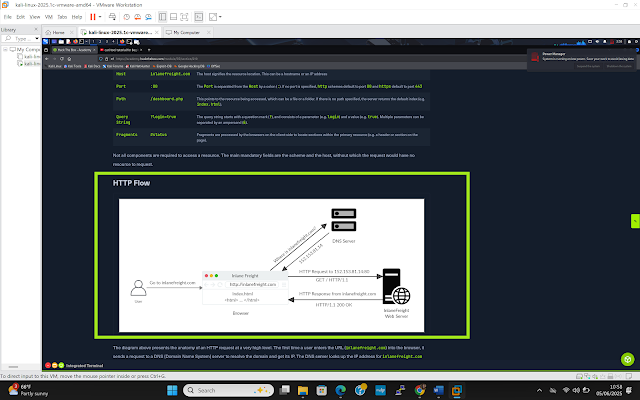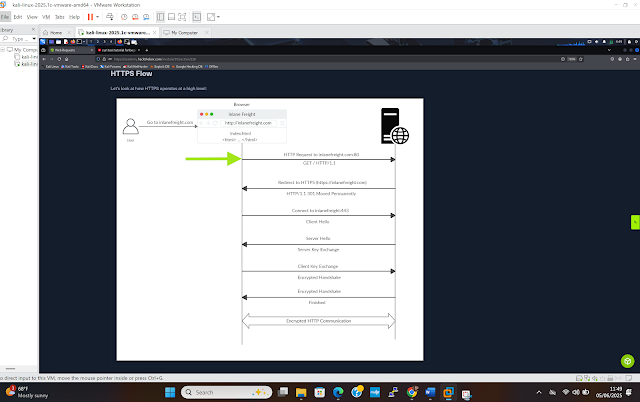HTTP Headers
Statement Problem - Understand the operation of HTTP Headers as they pass information between the client and server.
Approach: Discussion
Tools - Basic understanding of HTTP communication and cURL
Introduction
HTTP headers pass information between client and server. While some headers are used by both requests and responses, some are only used by either requests or responses. These headers can have one or more values appended after the header name and separated by a colon. There are five types of headers.
Discussion
General headers are used by both HTTP requests and responses. They are used in specific contexts to describe the message and not its contents. Examples include the date (date: Wed, 16 Feb 2025 10:30:44 GMT) that describes the time zone in which the message originated. Another example of a general header is a connection (Connection: close), that dictates if the current network connection should stay alive after the request finishes. The connection header normally has two values including close and keep-alive.
Entity headers are common to requests and responses. They are used to describe the content transferred by the message. They include content-type (text/html), media-type (application or pdf), a boundary that acts as a marker to separate content, content-length (385), and content-encoding (gzip).
Request headers are used exclusively for requests alone and do not relate in any way to the content of the message. The request headers include host (www.nnnn.co.ke) which specifies the host being queried, user-agent (curl/7.77.0) describes the client requesting resources, referrer (https://www.nnnn.co.ke) points to where the current request is coming from, accept (*/*) that describes the media types that the client can understand and a cookie that contain cookie value pairs in name=value. It also has authorization (basic….) that the server uses to identify the client.
Response headers are used in HTTP responses and do not relate to the content of the message in any way. Common response headers include location, age, server, set cookie (Cookies needed for client identification), and www-authenticate which notifies the client about the type of authentication required to access the required resource.
Security headers are a type of response headers used to specify the rules and policies to be followed by the browser while accessing the website. They include content-security-policy, strict-transport security and referrer-policy.


















